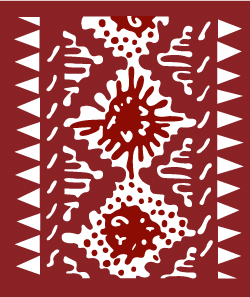Kuala Lumpur’s Chinatown district has a lot of historic charm and offers visitors temples, shopping and eating. Our Chinese New Year Chinatown walk started at the Central Market.
The Central Market is housed in an art-deco building with historical value. It was built in 1888 as a wet market and is now a popular location for tourists who are searching for souvenirs, local handicrafts, textiles and collectibles. Of course, it offers restaurants as well!
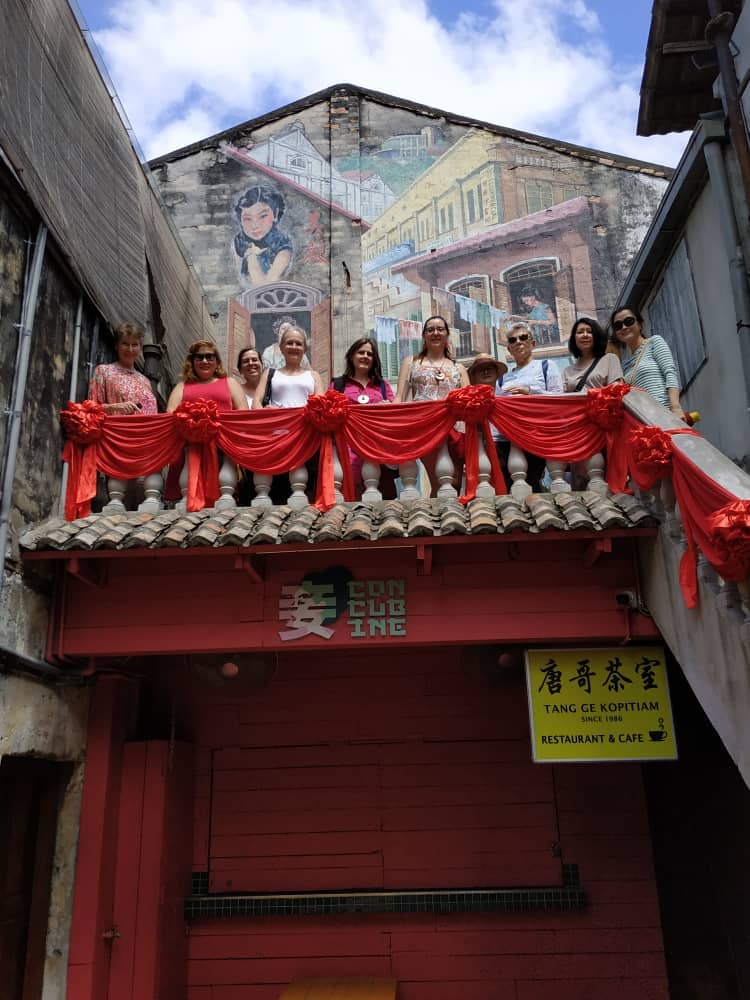
Our tour started with an explanation of our tour guide, Billy Woo, about the numerous Chinese New Year traditions and beliefs.
Many existing customs and activities can be traced back to the story of the monster Nian. In ancient times this ferocious monster would devour people at night. People of the village, scared of the beast, would stay inside with the doors and windows locked. One day the village was visited by a saint and he promised the people to expel the monster. At midnight, the monster sneaked into the village and encountered the saint who drove the monster away with loud noises, red colours and bright lights. For this reason, CNY is accompanied by firecrackers and the beating of drums, to scare the monster away. The colour red is popular because it symbolizes luck, joy, and happiness.
This year is the year of the rat. Billy explained that there are 12 animal signs and 5 elements. If you combine those, it means that every combination occurs once every 60 years. Billy explained that this year will be better than last year, with hopefully less catastrophes. Because of the element metal, which attracts water, we can expect a bit more rain.
The tour started with a walk through the pedestrianized and covered walkway, Kasturi Walk, to the historic centre of the City behind the Central Market. In the former days Capitan Yap Ah Loy played a crucial role in developing the city as a commercial tin mining centre. He implemented law reforms and introduced legal measures. Capitan Yap Ah Loy also built the first school in the area.
Next stop was the Sin Sze Si Ya temple (Si Ya means advisor). This temple was also founded by Yap Ah Loy and is the oldest Taoist temple in Kuala Lumpur. The temple comprises of a main prayer hall and two smaller side halls and has Buddhist, Taoist and Confucius elements. People can pray to the god of education and, especially for the ladies, there is the god of beauty. Billy explained that the god of fortune was a normal man who became a deity. He took care of goats and treated his mother very badly. One day he witnessed how the young goats seem to respect and take care of their mother. That insight inspired him to treat his mother differently. When his mother showed up to bring him his daily lunch, he ran towards her to show his change of heart. The mother however was scared that he would abuse her again and ran away, not accustomed to this enthusiasm. She slipped and fell dead. As a result, this deity is presented with a black face and an ugly look.

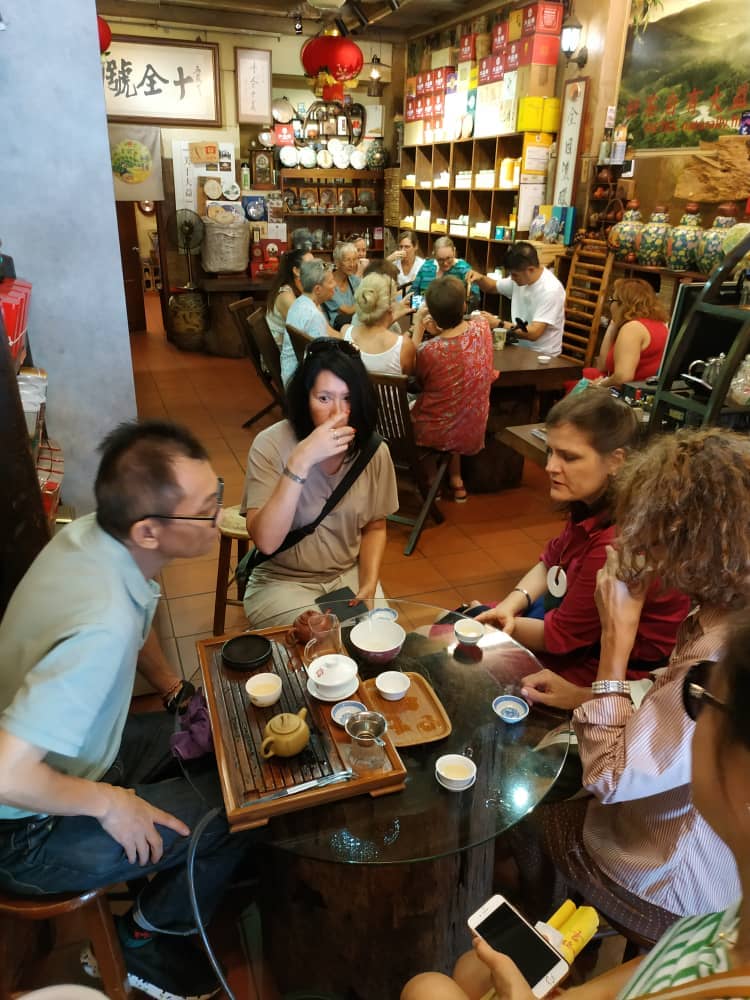
We continued the walk and past by shops and stalls selling flowers and food typical for CNY: lucky bamboo, pussy willows and cookies and sweets. Oranges are favoured gifts because if you say orange in Chinese it sounds like gold. And who doesn’t want to receive gold?!?
Unfortunately, Billy couldn’t find an example of the CNY cake which is offered to the kitchen god. The kitchen god is the one who reports to the main gods how everyone in the household has behaved during the past year. By offering this sticky cake his lips will stick together and he won’t be able to report anything.
Next, we made a refreshing stop at the Shiquan Taetea Garden. A small shop where you can taste different kind of teas. In the process you will learn how to prepare tea and that the right temperature depends on the kind of tea.
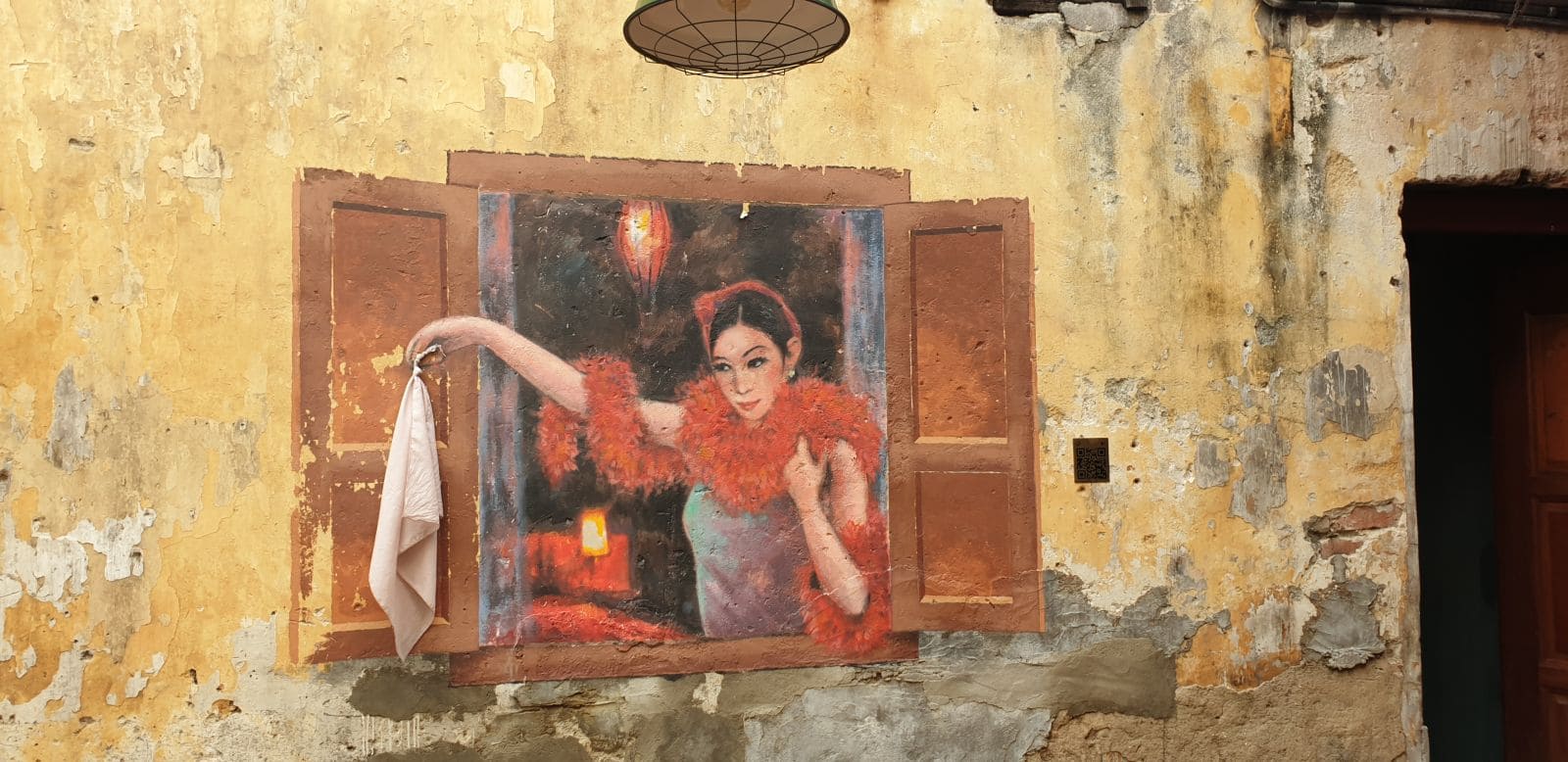
The walk took us past Ghost Lane or Little Demon Alley. A small laneway with restored shophouses and beautiful murals. A magnificent spot to visit and make our group photo!
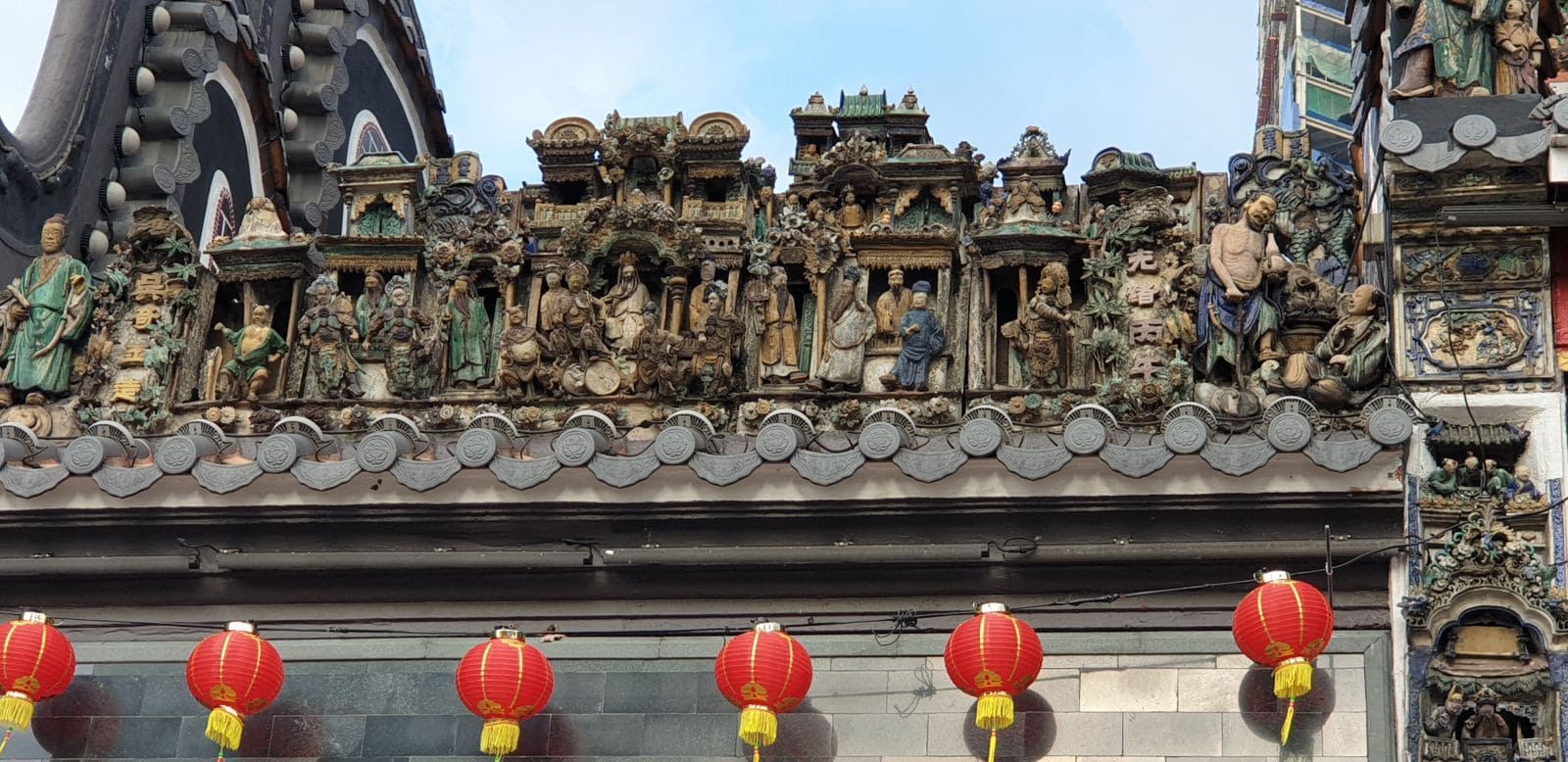
Our last stop was the Chan She Shu Yuen Clan Ancestral Hall, a clan association house for people with the same surname, Chan, Chang, Chin or Chen. The building was declared a protected heritage in 2006. The design is a copy of the temple Chan Clan Ancestral Hall in Xiguan, Guangzhou southern China, where this clan originates. The style is typically Cantonese with on either side of the main entrance the female and male guardian and a big square in the middle, representing the four corners of the world. On the roof you can see detailed pottery figures which represent ancient mythological characters. The temple is favoured amongst students who visit to pray that they pass their exam(s).
This beautiful building concluded our tour, a big thank you for our guide, Billy Woo, for the interesting tour!
Lisette Davis
